#chief aramaki
Explore tagged Tumblr posts
Text

#ghost in the shell#motoko kusanagi#cyberpunk#anime#stand alone complex#public security section 9#batou#togusa#ishikawa#saito#borma#pazu#chief aramaki#dogs#cats
179 notes
·
View notes
Text
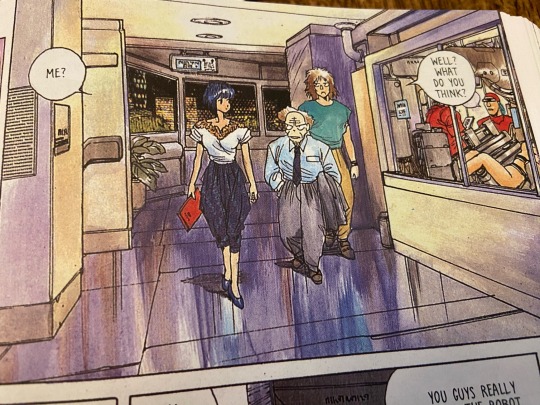
Motoko,Aramaki,& Togusa By Shirow Masamune
#major#the major#major motoko#major kusanagi#motoko kusanagi#major motoko kusanagi#aramaki#chief daisuke aramaki#chief aramaki#daisuke aramaki#togusa#shirow masamune#masamune shirow#author#artist#manga author#manga artist#Japanese#Japanese artist#japanese author#japanese manga#cyberpunk manga#cyberpunk#futuristic manga#futuristic#manga panel#color#color manga#color manga panel#cyberpunk manga panel
36 notes
·
View notes
Text


They both destroyed my soul forever
26 notes
·
View notes
Text





[NEWS] Sato Ryuji will be Participating in the Touken Ranbu 10th Anniversary Event "Dai Honmaru Haku 2025"
Sato Ryuji has been invited to participate in the Touken Ranbu 10th anniversary event "Dai Honmaru Haku 2025" where he will be doing several talk stages.
Live and archive streams are available for all the talk-stages.
NOTE: Ryuji is appearing as himself, and not as his character, Kashuu Kiyomitsu, who he plays in the "Musical Touken Ranbu".
INFORMATION ABOUT SATO RYUJI'S APPEARANCES
Date: January 18, 2025
"Musical Touken Ranbu" Talk Stage
Time: 12.30 (Japan time) to 13.20 (Japan time)
Participants:
Kayano Isamu (director)
Sato Ryuji (Kashuu Kiyomitsu)
Tamura Shin (Mutsunokami Yoshiyuki)
Yamazaki Shogo (Samidare Gou)
Let's Learn Together! Touken Academy Stage
Time: 16.00 (Japan time) to 16.40 (Japan time)
Participants:
Suekane Toshihiko (Kyoto National Museum Chief Researcher)
Hashimoto Mari ("Touken Ranbu" Japan Cultural Supervision)
Aramaki Yoshihiko (Yamanbagiri Kunihiro, "Touken Ranbu" Stage)
Sato Ryuji (Kashuu Kiyomitsu, "Musical Touken Ranbu")
STREAMING INFORMATION
The live and archive streams will be available to watch for free.
Archive Period: Until 7 days after the live stream
To watch the stream, please refer to this link: HERE
NOTE: VPN is required to watch the stream.
Source(s): ( x , x )
#Touken Ranbu#Musical Touken Ranbu#Toumyu#Sato Ryuji#Kashuu Kiyomitsu#Tamura Shin#Mutsunokami Yoshiyuki#Yamazaki Shogo#Samidare Gou#Touken Ranbu Stage#Tousute#Aramaki Yoshihiko#Yamanbagiri Kunihiro
22 notes
·
View notes
Note
AEIWAM ask spam 1: you’ve already elaborated on all the weird grudges people have, what about weird friendships?
THANK YOU! I am stupid busy but I am having a ton of fun with the friendships in this fic, so short versions that I can/will elaborate on later:
- Kenpachi and Byakuya: when Kenpachi first arrived in the Seireitei, Byakuya was a recently orphaned teenager and Kenpachi is, as he says "related to his mother" and can't help but take him under his wing a bit. As it stands, Kenpachi is, functionally, Byakuya's step-father.
- Izuru and Komamura: Wabisuke and Tenken were friends first, but it grew from there when Izuru got sent to investigate the curious incident of the dog in the night.
- Hanataro and Akon: The 4th needs more supplies than any other division and the 12th provides them, so the 4th's Toxicologist and Go-Fer gets to see the 12th's shadow captain all the time.
- Ikkaku and Sasakibe: the first lieutenant's meeting Ikkaku was at was ALSO the first lieutenant's meeting after TBTP, when nearly all the lieutenants had been field-promoted or killed, and there was a general bereavement, but when Sasakibe walked in to see what maniac the wildman that took over the 11th appointed for a lieutenant, he instead found Ikkaku doing stage magic tricks to cheer up a distraught Isane and Kaien, and realized this was a kind, if fundamentally ridiculous soul.
- "The Kids": Yachiru, Nel, Toshiro, Weiss, Syoga No Kotowari, and all the other Court Guard Brats tend to travel as a pack, and things can get a bit Lord Of The Flies sometimes.
- not exactly a friendship per se, but The Thirteen Daughters of Aramaki, including Hisana Kuchiki nee Aramaki.
- Soi Fon and Chikane Iba: after TBTP, Soi Fon ended up bonding with her fellow female captain and single mother Chikane Iba. And by "bonding" I mean "basically moved in with". Chikane was deeply relieved to have a regular babysitter and Soi Fon relieved to have another home to go to that doesn't contain her family. Or what's left of it.
- Rangiku and Retsu: Retsu, canonically, runs the Ikebana club, is the Chief Judge at the Seireitei Flower Festival, and keeps an enormous flower garden. Her first introduction to Rangiku is finding the academy student crouched in her foxgloves, and then being subject to a surprise 30minute lecture on the medical and cosmetic applications of digitalis, and realized she had found a kindred soul.
- Nanao and Gin: Nanao was quite possibly Gin's favorite person in the Court Guard, because she was very used to explaining things very slowly and in little steps, and Gin was functionally an escaped sausage roll in an executive position so 76% of the credit for the 3rd division's functionality goes to her. She liked having someone who actually listened to and took her advice and MAN, things got weird after Aizen.
- Uryuu and Yamamoto: Yamamoto doesn't actually hate Quincies- it's really only the "evaporating souls" thing he's got a problem with. Long ago, before the gotei-13, he was even friends with the ancestor of all Quincy, and misses his friend and curses Yhwach for what that monster did to him. Uryuu bears a startling resemblance to his ancestor, and it's nice to have someone to practice his German on again. Uryuu is fucking bewildered, but also severely short on men to look up to in his life and- well. Maybe. Maybe if they are friends, they can finally stop this feud?
- Yumichika and Ukitake: Yumichika was raised by his mother and the rest of the nurses in the first hospital in the Rukongai, and that's where he learned to fight too. It's a huge surprise for Ukitake when Yumichika knows what to do when he starts to have an anaphylactic reaction, but far from an unwelcome one.
- Renji, Iba and The Lads: Graduates of the Zaraki Kenpachi Finishing School for Young Men With Good Knees
- Orihime and Tousen: Hey, remember when we were both kidnapped by a deranged maniac that one time and coped by doing religious math and improvisational surgery about it? Good times!
- Chad and Komamura: "What do you guys even talk about?" "Nothing." "Why the secrecy?" "No Literally. We don't talk, and if we do it's about Nothing."
- Tatsuki and Mashiro: "This is boring, you wanna break chairs over each other's heads?" "Yeah!"
- Momo and Byakuya: The Rice Farm Subsidies Fraud Investigation.
221 notes
·
View notes
Text
24 Hours in Marineford : ON / OFF, Kizaru / Akainu
Note: OS number 3 of the 24 Hours in Marineford compilation.
Characters involved: Kizaru / Akainu. Friendship. Around 1K words.

24 hours in Marineford. 03: 00 AM : Day – Night Admiral Kizaru was a very strange man. Few people could understand im properly.
Some said he was just eccentric, others that his devil fruit had fried his brain.
He claimed that he was the only normal guy on this planet. But fortunately for him, there was a man who knew him by heart by now.
Admiral Kizaru and Chief Admiral Akainu had spend time together almost every day for years now. They knew each other by heart and considered each other old friends. They knew that they could count on each other in all circumstances. But sometimes, the Yellow Admiral's madness tested the red dog's patience, especially since he had become Chief Admiral. He wasn't a particularly patient man, and his new duties were straining his nerves. He threw himself into his duty, waking up well before dawn, at 4:30 in the morning, and rarely going to bed before midnight. Sakazuki was used to this rhythm by now, but the short hours of sleep he did manage to get had become very precious to him.
And the entire Marineford HQ was perfectly aware that, unless Big Mom had suddenly decided to commit genocide at 01:00 am, there was no question of waking him up. And of course, all the soldiers scrupulously respected this order so as not to suffer the anger of the admiral in chief. All except one, of course. The yellow admiral really didn't care. He was an insomniac by nature and got bored as soon as Marineford went to bed. Usually, he was reading adult books until he finally fell asleep, or he would go for a walk along the port to stretch his legs. But that night, it was impossible to sleep. In these rare cases, the yellow admiral could find comfort with Admiral Fujitora who was just as insomniac as him. But the admiral had gone on a mission to Dressrosa. And the last admiral, Aramaki, was really too weird for him. His old friend Vegapunk was very difficult to reach by den den mushis because he was always immersed in his research. So there was only one man left. It was now three in the morning and it was still impossible for Borsalino to fall asleep. The yellow admiral then got up from his bed and, still in his pajamas, headed towards Sakazuki's apartment, right next to his. He entered without knocking, as usual, and saw that his friend was sleeping, so he sat on the sofa in the living room, looking through some boring books scattered on the coffee table.
But no matter what, sleep would not come. He was missing something important : adrenaline, to tire his body and force himself to fall asleep. And Borsalino was not the type to run for hours to train. No, he was more of the suicidal moron type.
He noticed the beautiful porcelain lamp on the coffee table and began to play with it. “On, off. On, off...”
The entire room lit up brightly every time the Admiral placed his Devil Fruit on the lamp, then plunged back into darkness a few seconds later. “On, off. On, off...” Tired of his unamusing little game, he linked his Devil Fruit to all the lights in Akainu’s home: the kitchen, the bathroom, the toilet, and of course, the bedroom where his old friend was sleeping. “On, off. On, off...” The entire house was now lit up before going dark again in a few seconds. This started to make the yellow admiral laugh slightly. that's why he decided to take it to an other level for more amusement. This time he connected to all the lights in the Marineford HQ, including the general hospital and the training rooms. “On, off. On, off...” As the Admiral turned the entire base on and off remotely, screams rose up in the base. Soldiers were bumping into each other, doctors were operating in the dark, generators were dying one after the other from being turned off and on again so hard. “CAN WE KNOW THAT THE FUCK YOU'RE DOING ?! " The terrifying scream of his old friend brought him back to reality in a split second, as a huge jet of lava coated in haki fall next to his face.
Finally, he had it! His dose of adrenaline to go to sleep!
15 notes
·
View notes
Text
I’m just gonna say it: I want Sakazuki to launch a coup against the Five Elders, and I want him to team up with the Blackbeard Pirates to do it!
I know, I know: Sakazuki doesn’t work with pirates. But honestly? I think he’s willing to in order to defeat a greater evil (whether Teach is a greater evil than the Nobles remains to be seen), given his stance on the Warlords being abolished:
“I was against it, but the rulers’ decision can’t be reversed. Damn it, how can everyone be so naive?!? Justice comes at a price!”
This tells me he has no problems teaming up with pirates to fight stronger pirates. After all, Marines working with pirates is the very definition of the Warlord system in the first place. This is the price justice comes with, the price Sakazuki is willing to pay, even if he does get burned more than he gets results.
But is bringing Teach into the coup a price Sakazuki is willing to pay? If the world floods, the world’s pirates all drown, but will he tolerate civilians and Marine soldiers drowning with it? The Elders said straight to his face that the Marines are merely the public face of the World Government, which begs the question: what need do they have for that public face when most of the world has already drowned? They’re not going to put on a front for fishmen or Minks, are they? I wouldn’t think so. So ultimately, I don’t think Sakazuki has any reason to believe the Marines will be protected when the flooding ultimately comes to pass, meaning he has no choice but to rebel if he wants the Marines to be a thing in the post-flood world.
So why Blackbeard of all people? Because I still believe Kuzan’s his man, or else he would be FAR more concerned with him joining an Emperor’s crew than he showed Saint Warcury! So how I see it playing out is, Teach negoitates Garp’s life for Hachinosu’s World Government membership, Sakazuki spits on the idea of legitimizing a pirate nation, even for the literal face of the Marines, and Teach pulls his trump card: Turns out Kuzan told him about his distaste for the Elders, and wouldn’t you know it, his crew just got the ability to impersonate one of them! So Teach offers his help overthrowing the Elders in exchange for membership in Sakazuki’s World Government, which Sakazuki accepts, albeit with the intent to kill Teach afterwards instead of keeping his audacious promise.
So who actually takes part in the coup? The Ten Titanic Captains except Kuzan, who goes with Teach anSakazuki to confront the Elders, Kizaru, who has a fresh new reason to be done with the World Government, Fujitora, who hated the Government to begin with, Sengoku, who outright quit due to the Elders prioritizing face over public safety, Garp, who’s glad for a reason to finally punch the bastards, and probably Kong, though I don’t know how he feels about the Elders personally. I dunno, I feel like this would be the best excuse to show him fighting we’d get.
So how does the coup actually play out? Well, the Blackbeard Pirates slaughter many Celestial Dragons, but how many depends on whether Ryokugyu is there. Sakazuki probably gives him busywork to keep him away from the Holy Land, maybe quashing an uprising somewhere? Mwanwhile, the Admiral-level fighters confront the Elders, with Teach along for the ride, but ultimately, the coup fails because Imu is forced to intervene, who no one in the Marine camp even knew about to begin with. Teach, however, remembers the name Imu as Nerona Imu of the Twenty Kings, and sneaks out of the fracas before Imu annihilates the whole lot of them.
So what becomes of the Marines post-coup? Well, what I could see happening is Aramaki being named Fleet Admiral, Garling being named World Government Commander-In-Chief, and three Holy Knights being appointed the new Admirals. And with Garp dead by Imu’s hand, the stage is finally set for Luffy’s ultimate confrontation with the World Government.
5 notes
·
View notes
Text
Critical Thinking Exercise: ACAB, Including The Beloved Section 9 (Part 1)
One of my favorite characters in all of media is Motoko Kusanagi, a.k.a. The Major, from the series Ghost in the Shell. I love the series for many reasons, the most being is that it's not afraid to present our main cast as morally grey, even though inevitably the narrative is centered around Section 9 as a whole being the "good guys." What's also inevitable is the Stand Alone Complex Arcs of this series being hyper relevant narratives even today as Stand Alone Complex is a wonderfully complex thematic mixture of both Dystopian Cyberpunk and also Pro Police Propaganda. Which is what leads me into my main point: Yes, even Section 9 falls into the political pigeonhole of ACAB.
The police procedural is a genre that is steeped in framing police as a lawful good force of justice in whatever setting our protagonists, usually an entire police force, is set in: Brooklyn 99, CSI, NCIS, The list is extensive. They may encounter moral quandaries, but eventually they come out framed by the narrative as being "in the right." by the end of whatever episode. The Police Procedural also lives and dies by "The Ends Justify the Means" because usually the means at their morally greyest tend to involve interpreting the letter of the law to exploit a loophole to perform an otherwise illegal action.
I mention that last part specifically because in both season finales of Stand Alone Complex, Section 9's Chief of Police, Daisuke Aramaki, and Motoko Kusanagi both use the letter of the law and the color of law to accomplish some debatable ends by those points in the story.
First, some background context in case anyone tries to pull the argument that Section 9 is some complex exception. (Yes, there's going to be many of these puns, No, I will not apologize) In Universe, Section 9 is a branch of Japanese Public Security with its jurisdiction falling in line with the Ministry of Home Affairs, and their chain of command being Aramaki answering only to the Prime Minister themselves. On paper, they don't exist; in theory, they are the closest you can get to your own independent branch of both Secret Service AND Black Ops if you happen to be the prime minister of Japan; in practice, they are if 10 people had the entire practicing authority of the CIA, FBI, and KGB at their fingertips. They are very much a bootlicker's wet dream, in that they have and have used their authority outside the judicial system to be judge, jury, and executioner. But they are also not the only shark in this political ocean.
[Also from this point onward, I WILL be spoiling Season 1 of Stand Alone Complex, so if you haven't already, well, you've been warned.]
At the season one finale, Section 9's gambit of impersonating a key figure and prime suspect in "The Laughing Man" case in order to gather damning evidence to bring Serano Genomics to Justice has made them both enemies of politicians that directly benefit from Serano Genomics, and the perfect scapegoat. Their only option is to flee for their lives, while also leaking the evidence they have to the internet to garner public sentiment. Yes, you read that right, part of S9's plan to save their asses was to manipulate and rely on mob justice. It's a small aside, but an important one to include in the discussion. The Director of Section 9 has appeared to betray his own team to save his own ass, the prime minister sacrifices the entirety of Section 9 to save THEIR ass prior to a very tumultuous election cycle, and the individual team members suddenly find themselves in the firing line of their own government. It's a gripping season finale but also having a lot of political turmoil and jargon behind it alongside the bullets, the action, and the very touching self sacrifice of a few tachikomas.
Let's pivot a bit, throughout this essay, I've been referring to Section 9 as a whole, but I'd be remiss if I didn't say that practically speaking, Section 9 is commanded by 8 people, 2 if you want to technically stretch it and say that its main chain of command is Aramaki and the Major. A valid point that's framed by the In Universe media as a questionably valid media sensationalist spin is that Section 9 was originally founded as an international rescue operations unit, but specifically their "information gathering... and use of force under their own authority" became cause for public concern. Their evolution into such a powerhouse of an operational force is not dissimilar to how several security branches of the US government now have far reaching political and extra-judicial action in countries they do, and specifically countries they do not. Back towards how this relates to Section 9, An Emergency Cabinet meeting is held by members of the Japanese Government that specify that it wasn't specifically the existence of these Public Security Sections that was the issue, but the public's knowledge of their operations, however several other points are brought up that their actions can and are seen as being those "of a glorified death squad" established amidst the chaos and political turmoil of post-war Japan... Sound familiar?
The Prime Minister and Aramaki argue over a very sensitive, yet not too often spotlighted Bill, The Special Forces Restriction Bill, that supposedly limits such rogue operations, by essentially punishing a branch of the police that--in universe--legally shouldn't exist, with another one that no one knows exist: the Umibozu, a black ops unit under the JMSDF, which--also in-universe--suspiciously has a rather infamous flag. (Not accusing Masamune Shirow of any historically imperialistic connections, but it's interesting to always note the creative choices of juxtaposing certain politically charged symbols with the narrative factions who uses them) Needless to say, Aramaki doesn't agree with The Prime Minister, and so the chain of command of answering to the Prime Minister isn't sitting too well. He gives one last command to the Major before all hell breaks loose: Survive.
Before I continue, I want to say, I absolutely adore this season finale, one of the best in any anime I've seen, and it's only in rewatching and critically analyzing the anime as a whole in the context of real world politics, both past, present, and future, that I realize that there's so much interplay and narrative dissonance that make GITS such an interestingly complex work to engage with on a deeper level. I also enjoy that I myself am morally conflicted with how such beloved characters are admittedly morally grey forcing me to engage and sit with my own cognitive dissonance. From the very beginning of Episode 1 when Major Kusanagi apprehends a suspect after surgically shooting his foot off saying, "Straighten up your own act before whining about the world, or if that's too much, wear a blindfold, zip your mouth, and live in a cave." Before then seeming to almost execute said suspect point blank before Aramaki interrupts with more pressing orders, you are introduced to a character who has her own view of the world, defends it strongly, intelligently, and often violently as well.
It is also a world view that ends up preserving a less than ideal and metastable status quo, and the narrative does challenge her defense of such a system because her devotion to that system--while not completely blind, is still a willing compliance to it--leads her almost to her own demise as she is sniped by another political faction enforcing that same system, just as another opposing force from within that system. It is ultimately a system that has no qualms in cutting off its own arms and legs because it views them as expendable.
It's even more poetic that she DOESN'T really change this part of her world view in this season, in part because she hasn't really been forced to change it in order to survive. However she does change in other aspects of her world view, mainly thanks to the events during the season finale involving the Tachikoma. No, the primary world view that DOES change due to the events of season one is Togusa.
Togusa is our narrative viewpoint, he's the good cop in a setting of morally grey cops, but even HE, being one of the more relatable members of Section 9 as an everyday family man, isn't immune to judgement, both by the system he's a part of, and by the audience. In his interrogation scene, he's asked asinine and loaded questions to attempt to entrap him or even incriminate himself, even when "6 years ago, I was a police investigator, same as you!" his status, prior or present, ironically gives him no immunity to such protocol when he would have needed it the most. He's the most in the dark about Aramaki's ploy and feels rightfully betrayed by the preservation op, so the events that transpire SHATTER his world view, to the point where with 10 minutes left into the season, he's ready to become just like one of the many suspects he apprehended and assassinate a politician before being stopped by Batou who arrives juuuuust in time to explain everything, all while Togusa is thinking everything was just a cruel joke, which it honestly does feel like, to the audience and to Togusa. (Especially because Togusa had seen Batou gun down an entire bar of yakuza with an LMG)
And yet, it's because we feel cheated that we are then encouraged to dig deeper, maybe there is something more, and so you rewatch and pay closer attention, and you realize that Motoko Kusanagi and Aramaki aren't blind defenders of a corrupt system, they ARE complicit and actually well versed in the political interplay that keeps this political system and therefore Section 9's existence afloat. With Motoko equating Section 9 to nothing more than its perks of top of the line prosthetic body maintenance and access to the latest military tech while Aramaki views Section 9 as its members and is willing to defy even the Prime Minister to protect them, even if it means taking them down politically. True to their in-universe reputation, they are experts in information warfare, making sure the right people know what they need to know when they need it, and no one else, not even the audience, played by Togusa, until the very end. *wink wink*
Propaganda IS a key tool in information warfare, to stir, to inspire, to pit right vs left and draw fake yet defined lines across good versus bad. Stand Alone Complex is not an exception, but a subversion of it, saying the quiet part out loud, showing the audience the game, and then asking the audience: Are you suuuuuure you're smart enough to play the kind of 4D political chess literal grandmasters of the game have been eating, breathing, and playing for generations?
Bet. Here is just ONE example of the many games people with a lot more power and influence than your average joe play with peoples lives EVERY SINGLE DAY: The raw lobbying power Pharmaceutical Companies have over politicians. It's a game with many rules, many players, willing and unwilling, and even more victims...
...And here's the half-time show of fireworks, gun fights, Major Kusanagi Wielding a Anti-material rifle with one arm to show you how much of a bad ass she is.
Because she is. She IS dangerous. She is manipulative, cunning, efficient, deadly, intelligent. And she is a cop, she has the capability to neutralize anything she sees as a threat, many times even without direct approval from her chain of command. She is also very human, even if the narrative purposefully and thematically obfuscates that. She is human upholding a status quo, a setting, a universe, systematically designed to dehumanize her and see her as expendable. At least by the end of the first GIG.
Does this mean that GITS is just more cop propaganda? Yesn't. As a work involving politics, of course it as its own political biases, no work of art is devoid of that. And that's the point. An audience that wants apolitical media tends to be an audience that wants to be spoonfed good and evil without critically thinking what makes actions good or evil or why we are presented with characters that have good intentions but take horrible actions to do so, or they tend to be an audience that wants a fictional narrative karma to satisfy their justice fetish after being devoid of the presence of an omnipotent self-correcting cosmic concept in their everyday life. To Me, Ghost in the Shell: Stand Alone Complex has an incredible amount of integrity to present a setting and narrative where the "right answer" might not be easy to grasp, understand, parse, or fathom, even when on the surface it already seems cut and dry. The only way you can really form your own opinion about it is to engage with a work and how you digest it for yourself.
You thought you could escape a serious discussion about the false equivocation of an author's morals with the portrayal of an immoral action in their creative work? Bitch, you forget you're on tumblr.
This essay is grossly truncated and slightly disorganized because I could literally talk about this for hours, but the purpose of it is to spark a discussion on a meme that I saw juxtaposing someone emphatically saying "ACAB" alongside many fictional characters that have a police or enforcer occupation in their setting and I realized that one of my characters DID, in fact, fall under that umbrella and wanted to explore the deeper nuance of that.
(Don't ask me when a part 2 is coming, I was writing this after waking up at 2 am.)
0 notes
Text
I keep looking for a video clip of this scene, but I can't find it.
But my mind repeatedly refers back to this scene, so here's my personal reminder post of it's actual dialogue.
"
Batou: Chief, you've ever questioned the ethics of the neural surgeons who monkey around inside your brain? Chief Aramaki: They undergo psychiatrical evaluations, especially those in security. They're subjected to a stringent screening of their personal lifes. Of course, the ones who check are only human. Batou: I guess once you start doubting, there's no end to it.
"
Source: https://ghostintheshell.fandom.com/wiki/Quote:Ghost_in_the_Shell
0 notes
Text
One Piece headcanon:
Admiral Candidate is a half-rank ala First Sergeant, denoting greater prestige and responsibility than a Vice Admiral, but not a greater pay grade. This sort of thing is rare for officer ranks in real-world militaries, but the Marines are absolutely glutted with officers, so they've made further distinctions.
Code names are a relic of a much older system, really of interest only to historians (and we know how they feel about historians). The only purpose these days is the subtle psychological benefit of distancing someone from their humanity.
The names include a color and an animal from the Zodiac, though some leeway is given on how to interpret the animal. For example, Rabbit can also be Cat or Deer, any fowl will do for Rooster, etc. Color is whatever the candidate wishes, but it can't be the same as any other candidate or currently serving Admiral.
There are generally six candidates at any given time. New candidates can choose their animal, but unless there's been a major shake-up (due to retirements or losses in battle), there's rarely more than one available at a time. The former code names of the Fleet Admiral and Commander in Chief (positions held by former admirals) are removed from circulation until their death or retirement.
List of most recent Admiral code names:
Yellow Monkey (Borsalino)
Wisteria Tiger (Issho)
Green Bull (Aramaki)
Pink Rabbit (Gion) (candidate)
Brown Pig (Tokikake) (candidate)
Blue Pheasant (Kuzan) (retired)
Red Dog (Sakazuki) (promoted)
Gold Goat (Sengoku) (promoted/retired)
Grey Rat (Garp) (he has never once used this code name, both for ideological reasons and because he wanted Dog)
White Serpent (Kong)
Black Horse (Zephyr)
Dragon isn't used, supposedly out of respect for the Celestial Dragons.
1 note
·
View note
Text

by matrosso
16 notes
·
View notes
Text





Batou & Aramaki by Shirow Masamune
#ghost in the shell#manga#manga series#cyberpunk#cyberpunk manga#cyberpunk manga series#batou#aramaki#chief aramaki#daisuke aramaki#chief daisuke aramaki#chief#shirow masamune#masamune shirow#japanese#author#artist#japanese author#japanese artist#manga author#manga artist#japanese manga#japanese manga series#manga character#manga characters#cyborg#male#male cyborg#cyberpunk character#cyberpunk characters
8 notes
·
View notes
Photo
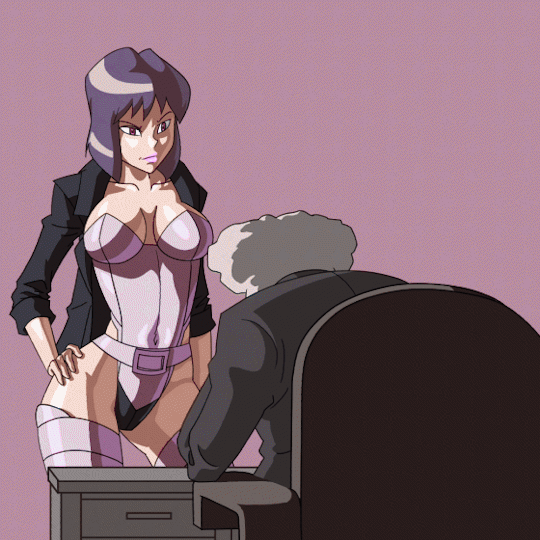
Aaaand done! She gun mess somebody up!
#Ghost In The Shell#Major Kusanagi#Chief Aramaki#Makoto Kusanagi#Daisuke Aramaki#animated gifs#fanart
13 notes
·
View notes
Text
It is now officially 25 years since one of my favourite animated films OF ALL TIME was released, as far as I am concerned one of the TRULY DEFINITIVE anime features, a triumphant masterpiece of the art form and the best film that one of my fave ever anime directors, the incomparable Mamoru Oshii, ever made. The exceptional Stand Alone Complex TV series may be my personal favourite adaptation of manga legend Masamune Shirow’s finest work, but believe me, this is still THE SHIT. Here’s to a whole quarter century of what is probably THE MOST INFLUENTIAL ANIME OF ALL TIME ...
As usual, WARNING!! Potential spoilers ahead for the uninitiated (and believe me, if you ARE uninitiated, you NEED to see this movie!!) ...
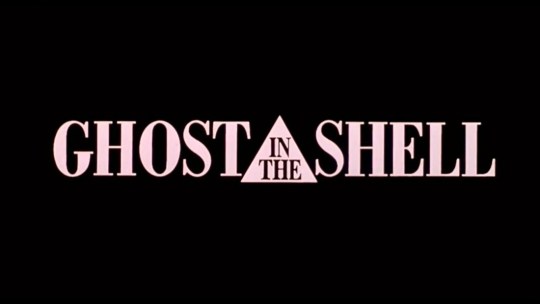
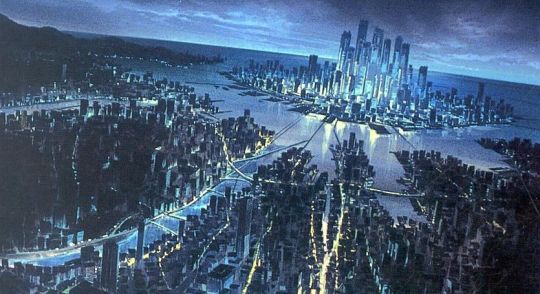
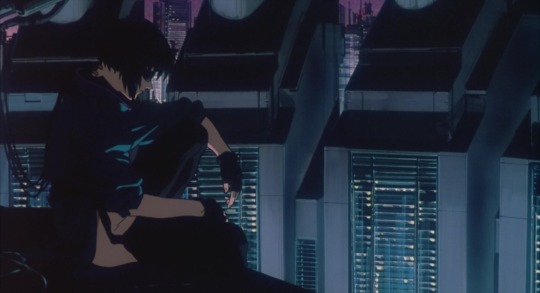
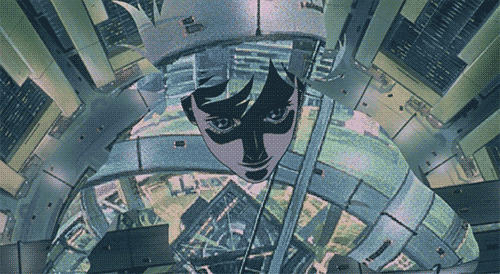
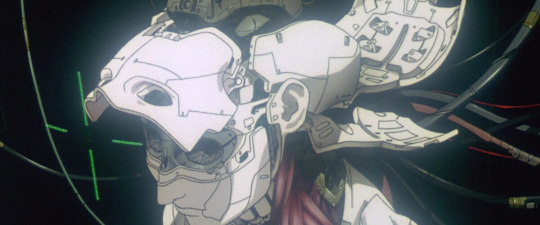
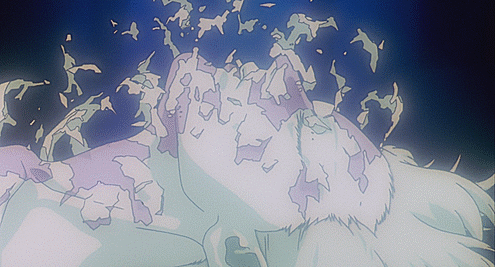
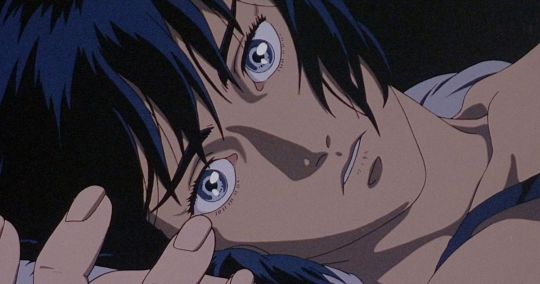
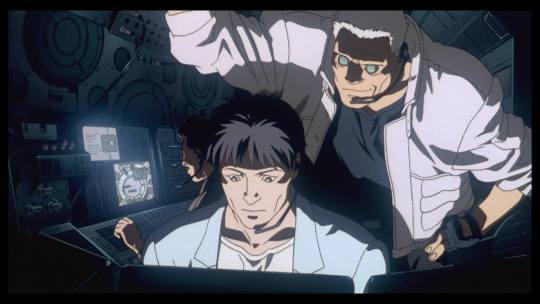
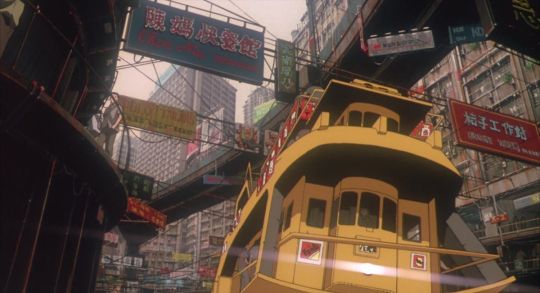
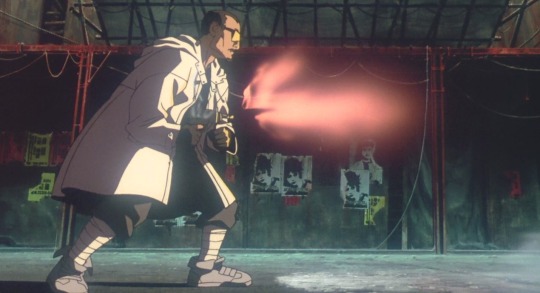
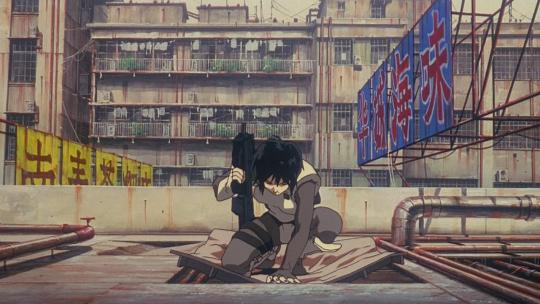
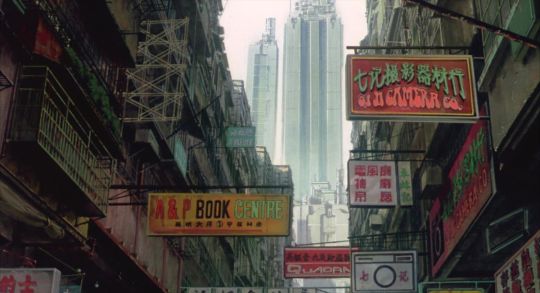
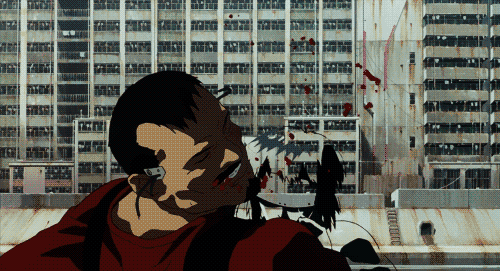
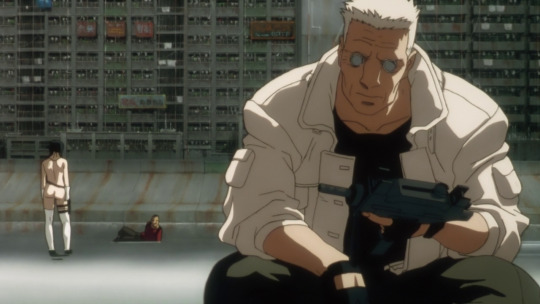
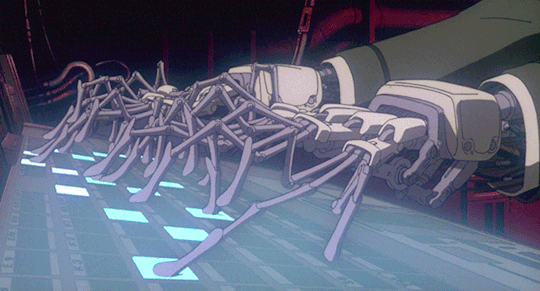
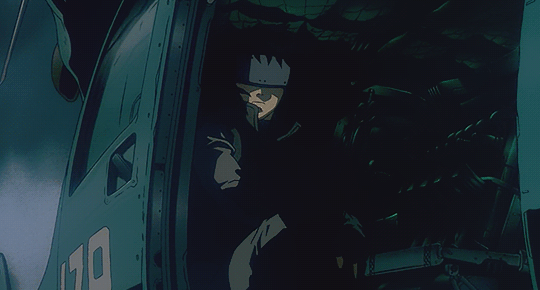

#ghost in the shell#ghost in the shell movie#ghost in the shell 1995#a quarter century of ghost in the shell#masamune shirow#mamoru oshii#motoko kusanagi#major kusanagi#the major#batou#togusa#chief aramaki#ishikawa#the most influential anime of all time#25 years ago today
160 notes
·
View notes
Video
youtube
#ghost in the shell: SAC_2045#motoko kusanagi#bato#section 9#chief aramaki#togasa#saito#ishikawa#paz#tachikoma
1 note
·
View note
Text
24 Hours in Marinford : OS 9 Garden Party
Note: OS 09 of the 24 Hours in Marineford compilation.
Characters involved: Admiral Ryokugyu and Admiral Fujitora.
This chapter is SFW.

24 Hours at Marineford
09:00 am : Garden Party
The new admiral had officially arrived today at Marineford. The new chief admiral had shown him the entire building, as well as the new Admiral Fujitora who had also arrived the same day.
Ryokugyu had not particularly enjoyed this little walk with the big boss and the blind man, but he did not particularly want to be noticed on the first day. He was an observant man who took the time to develop his strategies, even if they were not particularly appreciated by the other high ranked officers.
The visit had ended before lunch, when the two new admirals had discovered their new office. The chief admiral had then walked away to attend yet another meeting with the World Government, leaving them alone in this empty corridor.
Their recruitment had taken place unofficially a few days earlier in the presence of Sakazuki to sign the last official papers of their integration. Thus, the two men had the pleasure of discovering that all the personal effects they had left available that day, had already been deposited in their respective offices.
Fujitora's writing material had been delicately put on his desk, while Aramaki's desk was covered with green and flowering plants from floor to ceiling.
"Your office smells delicious." Issho had admitted, a thin smile on his lips.
Ryokugyu was particularly wary of the new admiral. His calm and always smiling face did not inspire much confidence in him…
"Gifts from my fans." The green admiral replied, a provocative smile on his lips.
Issho continued to smile delicately, as he turned around to try to reach his new office in this labyrinth of corridors that he did not yet know.
“You must be very charismatic to have so many fans then!”
Aramaki rushed into his office, slamming the door behind him. Fujitora may not have been wrong, his collection of green plants invaded the entire room. The outlines of his desk could barely be seen.
The new admiral sighed. He turned on the main light and closed the curtains with an angry gesture. Now that no one could observe him anymore, he relaxed and let himself fall into his new chair, his feet on his desk.
He took a deep breath and savored the different smells of his plants, the very particular smell of wet earth, the delicate hints of perfume from some of the flowers. His devil fruit activated without him really noticing, stimulated by all those familiar and pleasant smells. A few delicate yellow flowers appeared in the center of his hair as the admiral was about to fall asleep, dodging lunch once again.
He didn't particularly blame himself for lying to his new colleague. He had never received plants from his "fans", but he wanted to keep to himself this passion for plants that had been so mocked in his youth.
That's why he had patiently waited for Admiral Akainu to officially become Admiral-in-Chief of the Navy before signing in. If the Admiral-in-Chief spent his free time cutting his bonsai, perhaps he would be more accepting of his eccentricities with his plants? For the other high-ranking officers, all he had to do was perpetuate his reputation as a Don Juan...
1 note
·
View note